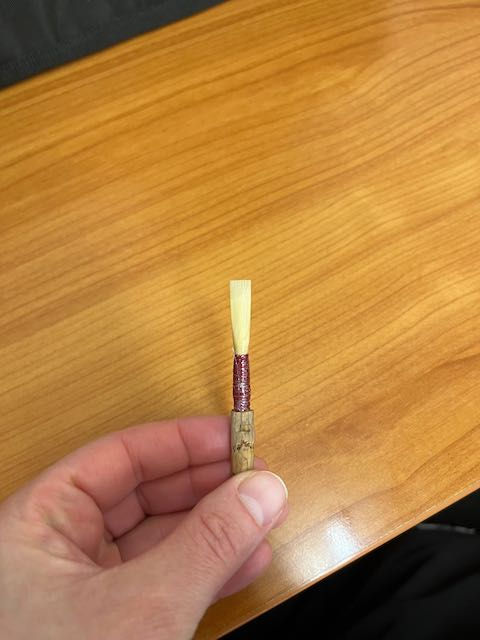What oboe reeds do I recommend?
- agessneroboe
- Mar 21, 2024
- 3 min read
It’s been a while since I last shared my list of reed recommendations with links, so I thought I would update you today. You’ll notice that things have changed, and some brands that I’ve recommended in the past have fallen off the list. If you have questions about this, please reply to this email and ask! I’m happy to share the experiences of my students!
Beginner
I consider a student a beginner if they have played oboe for under 1.5 years, AND/OR if they haven’t established a regular weekly practice schedule AND/OR if they do not play any other instrument. Some students who have been playing oboe throughout middle school may be considered beginners if they don’t practice at home.
Beginners don’t know many scales, aren’t expected to play in tune well, and aren’t expected to have access to their full dynamic range. Often they’re unable to play softer than mezzo piano.
Singin’ Dog Classic Oboe Reed: Medium
These reeds are not fancy. They use inexpensive materials and it’s reflected in the sound, but they play easily right out of the box and beginners are able to grasp the basics of sound production, dynamics, and play throughout a beginner-appropriate range easily.
The price is quite low, so for the clumsy beginners it’s less painful to ruin a reed in the first week that it’s played.
CAVEAT: these reeds are not appropriate for students who have been playing more than 6 months.
Forrest Green Label Oboe Reed: Medium
These reeds are reliable, inexpensive, and play fairly in tune right out the box. They are slightly harder generally than the Singin’ Dog Classic reeds above, so I often use them as step-up reeds after Singin’ Dog is no longer appropriate for the student.
CON: These are very popular, so they go out of stock around typical concert times: December, March, May.
Intermediate
I consider a student to be at an intermediate level when they’ve played all their major scales fluently and without mistakes. They are able to play from low B (or Bb depending on their instrument) up to high D or Eb without difficulty. They are working on expanding their dynamic range to include true pp without squeezing. They are working on incorporating vibrato into their pieces, and they have a basic understanding of how to use dynamics to portray a phrase.
Bocal Majority Intermediate Oboe Reed: A, O, D, Z, G
These reeds are made by oboists and checked for intonation before being sent out. They are generally consistent between batches and play mostly in tune right out of the box. They are harder, but provide a greater depth of tone quality because of the resistance.
CON: These are very popular, so they go out of stock around concert times: December, March, May.
Forrest Green Label Oboe Reed: Medium
These reeds are reliable, inexpensive, and play fairly in tune right out the box. They are slightly harder generally than the Singin’ Dog Classic reeds above, so I often use them as step-up reeds after Singin’ Dog is no longer appropriate for the student.
CON: These are very popular, so they go out of stock around typical concert times: December, March, May.
When both of the above reeds were totally sold out this month, a few of my students needed reeds and I had them try reeds by this brand. So far the reeds are similar in quality to the various Bocal Majority Intermediate reeds I’ve heard, which means they’re in tune out of the box (mostly), and a comfortable hardness.
I hesitate to recommend these reeds without caveat because they’re so new to my students, so I can’t say with certainty that they’re awesome and reliable, but I have high hopes.
Advanced
I consider students to be advanced when they have memorized major and minor scales and can play them in different subdivisions fluently with few mistakes. They have full control of their dynamic range and play in tune consistently when their reed is broken in and/or adjusted. They incorporate vibrato into their repertoire without being reminded. They can play up to high F or higher with little difficulty.
These reeds are quite consistent, and close to the reeds I make myself, so are easy for my students to adjust themselves. They are made of high quality cane and hold up well over time. They have a lovely, consistent sound, and offer slightly more resistance than the Intermediate reeds listed above to encourage the use of good air support
The price point can be restrictive for some students.
There’s sometimes a 2-3 week delay in orders being fulfilled due to volume of demand.
If you'd like to get more of this kind of content straight to your inbox, please subscribe to my newsletter! The Oboe 101 newsletter is published weekly for oboists, educators, and family of oboists!




Comments